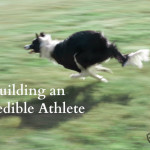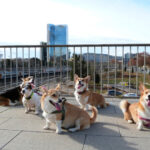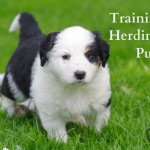4 Tips for Raising Your Herding Breed Puppy
I will never forget the moment when the breeder handed my new puppy to me – it was the start of an amazing and busy journey. This was the first puppy that I would keep all for myself, so why not make it a Belgian Malinois from Dutch working lines? I liked a challenge, right? This decision had taken years of thought and research, and I never underestimated the work that I had before me, particularly in the first couple of months.
Based on my learning experience, here are four tips to help you raise your herding breed puppy:
Careful Socialization
Most people understand that it is important to socialize their puppies – there is a tight deadline as the critical socialization window closes around 16 weeks of age. However, socialization is very tricky as we want to protect our sensitive herding breed puppies from detrimental experiences while still exposing them to pretty much everything possible in the environment.
This balancing act requires a good knowledge of your puppy’s body language and how to shape desirable behaviors in a positive manner. Initially, my puppy was terrified of other dogs and puppies, so I found a puppy class that let us gradually work our way into the general population of the class (we started off by ourselves in a fenced off area). By the third class, my puppy and I were in the general population of the class, and he was participating in puppy off-leash play time. However, I could not have achieved this had I not put in the time to build up positive associations with other puppies and gradually move closer to them. My puppy was also coming to work with me, going to the local coffee shop/ outdoor mall, as well as the boxing gym!
Impulse Control
As a behavior consultant, I see a lot of herding breeds for impulse control related issues – leash reactivity to people/dogs/cars, compulsive behaviors and anxiety. Herding dogs are often high strung and want what they want NOW. Why wait? So when out and about, I focused on teaching my puppy to check in with me before meeting new people, having short visits with strangers, and receiving excellent rewards for returning back to me. All of this impulse control along with socialization was preventive work for his later months.
Mental Stimulation
Having spent years working with a veterinarian who specializes in sports injuries and lameness in dogs, I was hyper-sensitive to over-exercising my puppy. While we still got out for short hikes and fun walks, my puppy didn’t stop – I had to stop him and watch his reckless abandon for abusing his body. Training and mental stimulation were our main games – he earned his meals via training or from food dispensing toys – a habit we have continued into his first year. Herding breeds need mental stimulation to “tire” them out – not endless physical exercise.
Sport Foundation
Many people who purchase or adopt a herding breed puppy have sport or working goals in mind; I certainly did – why else purchase a Malinois? However, building impulse control and bitework foundation completely clash with each other. I still needed to walk my puppy down the street while building drive to bite so I solved this issue with “clothes”. My puppy had a different harness and/or collar for every activity he did – three different harnesses for his three main activities and then just his collar for out and about socialization. He has continued with his clothes and knows the difference between his bitework harness, tracking harness and detection harness.
Your first couple of months with your new herding breed puppy is an exciting and busy time. With a lot of planning and work, you can set you and your puppy up for success later in life.
Article By:
Sarah Dykes, Dip DTBC, CDBC






